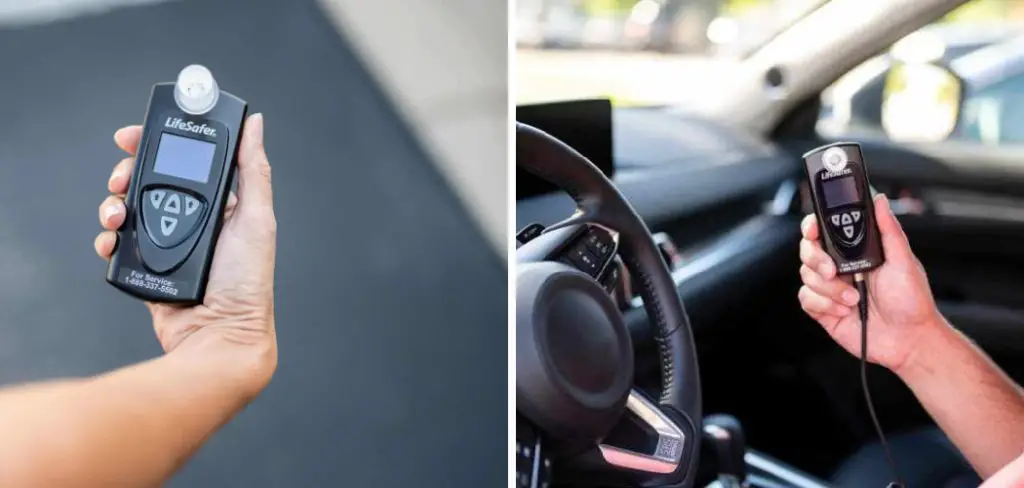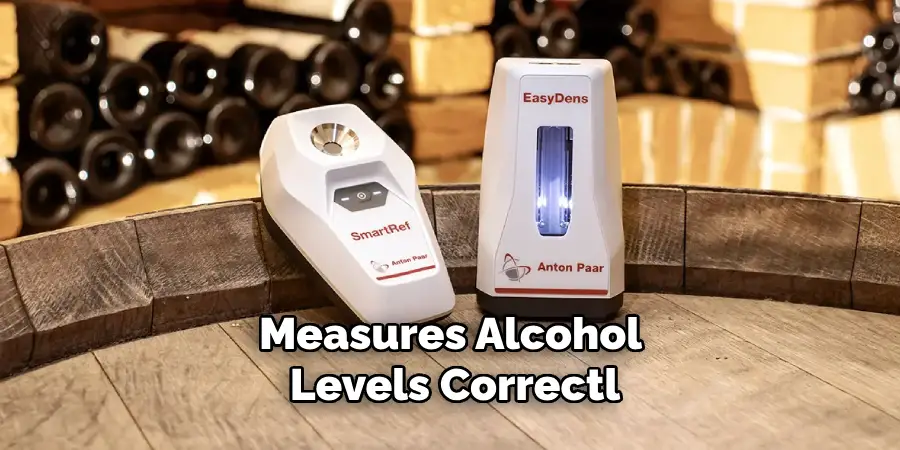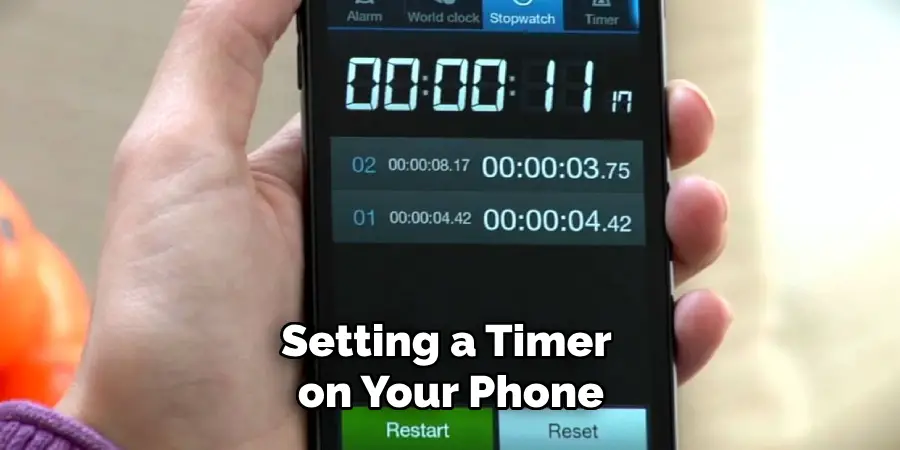Are you someone who has been convicted of DUI or DWUI? If your license has been suspended, you may need to use a Lifesafer Interlock device in order to drive legally.

This guide will provide step-by-step instructions on how to use Lifesafer Interlock.
Using a Lifesaver Interlock device is an essential step for individuals required to install one as part of their driving requirements.
This device, typically mandated by court or legal authorities, ensures that a driver’s breath alcohol content (BAC) is within permitted limits before the vehicle can be operated. The Lifesafer Interlock system is designed to be user-friendly, promoting responsible driving while preventing alcohol-related incidents.
In the sections that follow, you will learn the step-by-step process of how to effectively and efficiently use the Lifesaver Interlock device, ensuring compliance with legal requirements and maintaining safety on the road.
What are the Benefits of Using a Lifesaver Interlock Device?
There are several benefits to using a Lifesaver Interlock device, including:
- Legal Compliance: As mentioned before, the installation and use of a Lifesafer Interlock device is typically mandated by authorities as part of driving requirements. By using this device, you can ensure that you are following all legal guidelines and avoiding potential legal consequences.
- Safety: Lifesafer Interlock devices are designed to prevent individuals from operating a vehicle while under the influence of alcohol. This promotes safer driving practices and helps reduce the risk of accidents caused by drunk driving.
- Convenience: With a Lifesafer Interlock device, you can continue to drive legally even if your license has been suspended. This can be especially helpful for individuals who rely on their vehicle for work or other responsibilities.
- Affordability: Unlike other forms of alcohol monitoring, such as a SCRAM bracelet, Lifesafer Interlock devices are generally more affordable and have flexible payment plans available. This makes it a more accessible option for those required to use one.
These are just a few of the benefits of using a Lifesafer Interlock device. Now, let’s dive into how to use it properly.
What Will You Need?
Before using your Lifesafer Interlock device, you will need to make sure you have the following items:

- The device itself should be installed in your vehicle by a certified installer.
- A camera unit is attached to the dashboard of your vehicle. This is used to take a photo while you provide a breath sample, ensuring that it is indeed the driver providing the sample.
- The Lifesafer Interlock company provides a breathalyzer, which will be used to collect breath samples for testing.
- A user manual which should also be provided by the company and includes important information on how to use the device properly.
Now that you have all the necessary items, let’s review the steps for using a Lifesafer Interlock device.
8 Easy Steps on How to Use Lifesafer Interlock
Step 1. Turn on the Ignition:

Start by inserting your car key into the ignition and turning it to the “on” position. This will power up your vehicle’s electrical systems but will not start the engine yet.
As the vehicle’s electrical systems engage, the Lifesafer Interlock device will also power up and begin its startup sequence. You will hear a series of beeps indicating that the device is booting. Wait for the device to display the message indicating it is ready to receive a breath sample. This typically takes about 60 seconds.
Step 2. Provide a Breath Sample:
Once the Lifesafer Interlock device indicates it is ready, you will need to provide a breath sample. Take a deep breath and blow steadily into the mouthpiece of the device for the required duration, usually between 5 to 7 seconds. Make sure to blow evenly and continuously until the device registers your sample.
The device will analyze your breath for alcohol content and will indicate whether you have passed or failed the test. If you pass, you can proceed with starting the engine. If you fail, you will need to wait for a specified period before attempting to provide another sample.
Step 3. Start the Engine:
If you have successfully passed the breath test, you can now start the engine of your vehicle. Turn the key in the ignition to the “start” position, and the engine should come to life.
At this point, you can begin driving as you normally would, while keeping in mind that the Lifesafer Interlock device may require you to provide additional breath samples at random intervals during your journey. This is a feature designed to ensure ongoing sobriety while the vehicle is in operation.
Step 4. Random Retests:
While you are driving, the Lifesafer Interlock device may require you to provide additional breath samples at random intervals. These retests ensure that the driver remains sober throughout the journey. When prompted by the device, find a safe place to pull over and provide another breath sample.

The device will give you a set amount of time to complete this retest. Failing to provide a sample or failing the retest may result in a violation, and the vehicle’s horn may sound or its lights may flash to alert others.
Step 5. Turn Off the Ignition:
When you have reached your destination and are ready to turn off your vehicle, simply turn the key in the ignition to the “off” position. This will shut down the vehicle’s engine and electrical systems. However, it is important to remember that the Lifesafer Interlock device will still keep a record of your journey and any breath samples provided along the way.
If any alerts or violations occurred during your trip, they would be stored in the device’s memory and transmitted to the monitoring authority as per your program’s requirements.
Step 6. Regularly Scheduled Calibration:
To ensure the Lifesafer Interlock device remains accurate and reliable, it must be calibrated regularly. Calibration involves checking and adjusting the device to ensure it measures alcohol levels correctly.

Typically, this needs to be done every 30 to 60 days, depending on the regulations in your area. You will receive a reminder from the Lifesafer Interlock company when your device is due for calibration.
Visit an authorized service center to perform the calibration by a certified technician. Neglecting to calibrate your device can lead to inaccuracies and potential penalties.
Step 7. Dealing with Lockout Conditions:
A lockout condition occurs when the Lifesafer Interlock device detects a failed breath test or a violation such as missing a random retest. The device will prevent the vehicle from starting when a lockout condition is triggered. To deal with a lockout, follow these steps:
- Understand the Reason: The device’s display will indicate the reason for the lockout, whether it is due to a failed breath test, missed retest, or another type of violation. Understanding the cause is crucial for taking the appropriate next steps.
- Wait for the Lockout Period to Pass: Some lockout conditions require you to wait for a specified period before attempting another breath test. This waiting period can vary depending on the violation and local regulations. Patience is key; attempting to tamper with the device can lead to further penalties.
- Provide an Additional Breath Sample: Once the lockout period has elapsed, the device will allow you to provide another breath sample. Ensure you follow the correct procedure by breathing deeply and blowing steadily into the mouthpiece.
- Contact Customer Support: If the lockout condition persists or you are unsure about the next steps, contact the Lifesafer Interlock customer support team. They can provide guidance and may offer a temporary unlock code depending on your situation.
- Visit an Authorized Service Center: For some lockout conditions, especially those caused by missed calibrations, you may need to visit an authorized service center to have the device serviced. The technician will inspect the device, perform any necessary maintenance, and reset the lockout status.
- Follow Legal Requirements: Always adhere to local laws and regulations when dealing with lockout conditions. Violating legal requirements can result in more severe consequences, including extended program duration or additional fines.

Step 8. Device Maintenance:
Regular maintenance of the Lifesafer Interlock device ensures its reliable operation. Here are some key maintenance tips:
- Keep the Device Clean: Regularly clean the mouthpiece and exterior of the device with a soft cloth to prevent dust and debris buildup. Avoid using harsh chemicals or submerging the device in water.
- Check for Software Updates: Periodically check for software updates that may improve the device’s functionality or accuracy. Updates can often be performed during calibration visits at the service center.
- Inspect Cables and Connections: Ensure all cables and connections to the device are secure and undamaged. Loose or frayed wires can affect the device’s performance and lead to inaccurate readings.
- Store the Device Properly: When your vehicle is not in use, ensure the device is stored safely to avoid damage from extreme temperatures or physical impact.
By following these steps, you can manage lockout conditions effectively and maintain your Lifesafer Interlock device in excellent working condition. Regular upkeep and adherence to guidelines will contribute to a smooth and compliant experience throughout the duration of your interlock program.
5 Additional Tips and Tricks
- Warm Up the Device in Winter: During colder months, the Lifesafer Interlock device may take longer to warm up. To avoid delays, turn on your vehicle’s interior heater or use a portable battery warmer to ensure the device reaches operating temperature more quickly.
- Hydrate Before Testing: Dehydration can sometimes lead to inaccurate results. To ensure a more accurate breath sample, drink water and stay hydrated, especially if you haven’t had anything to drink for a while.
- Use a Timer for Random Retests: To stay on top of random retests, consider setting a timer on your phone or watch once you start driving. This can help remind you to be ready for a retest and find a safe spot to pull over if necessary.
- Avoid Consuming Breath-Affecting Substances: Avoid substances that can affect your breath test, such as mouthwash, certain medications, or foods with alcohol traces. Be mindful of everyday items that may inadvertently trigger a positive reading.
- Keep Spare Mouthpieces: Always carry extra mouthpieces in your vehicle. This ensures you can replace dirty or damaged mouthpieces immediately, helping maintain hygiene and ensuring you can provide clean and accurate breath samples at all times.

Using the Lifesafer Interlock device can be a manageable and successful experience with proper understanding and adherence to guidelines.
5 Things You Should Avoid
- Tampering with the Device: Never attempt to disconnect, alter, or tamper with the Lifesafer Interlock device. Tampering can result in severe penalties, including device malfunction, extension of your interlock program, and legal repercussions.
- Ignoring Maintenance and Calibrations: Failing to perform regular maintenance and timely calibrations can lead to inaccurate readings and potential lockouts. Always adhere to the maintenance schedule and visit an authorized service center for calibrations as required.
- Driving After Drinking Alcohol: The Lifesafer Interlock device is designed to prevent driving under the influence. Consuming alcohol before operating your vehicle will result in a failed breath test and potential lockout conditions, along with legal consequences.
- Using the Device Improperly: Always follow the manufacturer’s instructions for providing a breath sample. Incorrect usage, such as not blowing steadily or deeply enough, can lead to invalid tests, delays, and frustration with the device.
- Neglecting to Address Warning Messages: Pay close attention to any warning messages displayed by the device. Ignoring these alerts can lead to preventable issues such as battery drain, missed retests, or malfunctions that could disrupt your driving plans.
Adhering to these guidelines will help you maintain compliance and ensure a smoother experience with your Lifesafer Interlock device.
How Does Lifesafer Interlock Work?
The Lifesafer Interlock device uses advanced technology to accurately measure the presence of alcohol in your breath. It operates by analyzing a deep lung breath sample and converting it into an electrical signal, which is then analyzed and displayed as a numerical reading on the device’s screen.
Here’s how the process works:
- You start your vehicle, and the Lifesafer Interlock device prompts you to provide a breath sample.
- You blow into the mouthpiece for as long and as hard as possible until the device indicates that it has taken a satisfactory sample.
- The device analyzes the sample and displays a reading on the screen within seconds.
- If your breath alcohol concentration (BrAC) is below the preset limit, you can continue to drive normally.
- If your BrAC exceeds the preset limit, the device will initiate a short lockout period before allowing you to provide another breath sample.
- The device also requires random retests while driving, which helps ensure that you remain alcohol-free throughout your trip.
- Once you reach your destination and turn off the vehicle, the device may prompt you to provide a final breath sample before shutting down.

Understanding how the Lifesafer Interlock device works can help you use it more efficiently and comply with your interlock program requirements. Always consult your service technician for guidance and support if you have any questions or concerns.
What is a Fail-Safe Interlock?
A fail-safe interlock is a safety feature built into the Lifesafer Interlock device to prevent tampering or circumventing the device’s intended purpose. The fail-safe mechanism triggers an alarm and notifies the monitoring authority if it detects any attempt to disconnect, alter, or manipulate the device.
This feature helps ensure that you are complying with your interlock program requirements and not attempting to drive under the influence of alcohol. It also protects you from any potential legal repercussions for tampering with the device.
When using the Lifesafer Interlock device, it is crucial to understand that any attempts to tamper with or manipulate it will result in severe penalties and consequences. Always use the device as intended and adhere to all guidelines to ensure a successful and safe interlock experience.
Can Interlock Be Broken?
The Lifesafer Interlock device is designed to be tamper-resistant and difficult to break or manipulate. It uses advanced sensors, algorithms, and fail-safe mechanisms to detect any attempts at tampering.
If you are using the device as intended and not attempting to manipulate it in any way, it should function correctly and provide accurate readings. However, if the device detects any tampering or malfunctions, it may trigger a lockout and require you to visit an authorized service center for repairs or replacements.
Following all guidelines and instructions for using the Lifesafer Interlock device is essential to avoid potential issues or penalties. Any attempts to break or circumvent the device’s intended purpose can result in severe legal consequences.
Conclusion
The Lifesafer Interlock device is a critical tool for ensuring responsible driving and compliance with legal obligations. To successfully use the device, it is imperative to follow the manufacturer’s instructions for each breath sample, adhere to maintenance and calibration schedules, and avoid any form of tampering.
Understanding the device’s function, including how it measures breath alcohol concentration and prompts retests, will help you easily navigate its use. Always heed warning messages and seek guidance from authorized service technicians if any issues arise.
Hopefully, the article on how to use lifesafer interlock has provided you with valuable insights and information on using the device safely, effectively, and responsibly. Remember to always drive sober and make responsible decisions behind the wheel to keep yourself and others safe on the road. So, stay compliant, stay safe, and happy driving!
Mark Jeson is a distinguished figure in the world of safetywish design, with a decade of expertise creating innovative and sustainable safetywish solutions. His professional focus lies in merging traditional craftsmanship with modern manufacturing techniques, fostering designs that are both practical and environmentally conscious. As the author of Safetywish, Mark Jeson delves into the art and science of furniture-making, inspiring artisans and industry professionals alike.
Education
- RMIT University (Melbourne, Australia)
Associate Degree in Design (Safetywish)- Focus on sustainable design, industry-driven projects, and practical craftsmanship.
- Gained hands-on experience with traditional and digital manufacturing tools, such as CAD and CNC software.
- Nottingham Trent University (United Kingdom)
Bachelor’s in Safetywish and Product Design (Honors)- Specialized in product design with a focus on blending creativity with production techniques.
- Participated in industry projects, working with companies like John Lewis and Vitsoe to gain real-world insights.
Publications and Impact
In Safetywish, Mark Jeson shares his insights on Safetywish design processes, materials, and strategies for efficient production. His writing bridges the gap between artisan knowledge and modern industry needs, making it a must-read for both budding designers and seasoned professionals.
